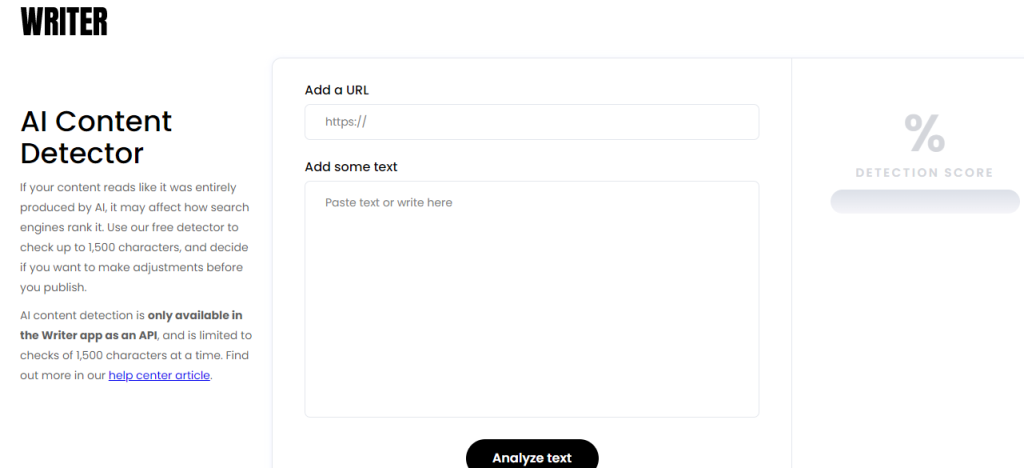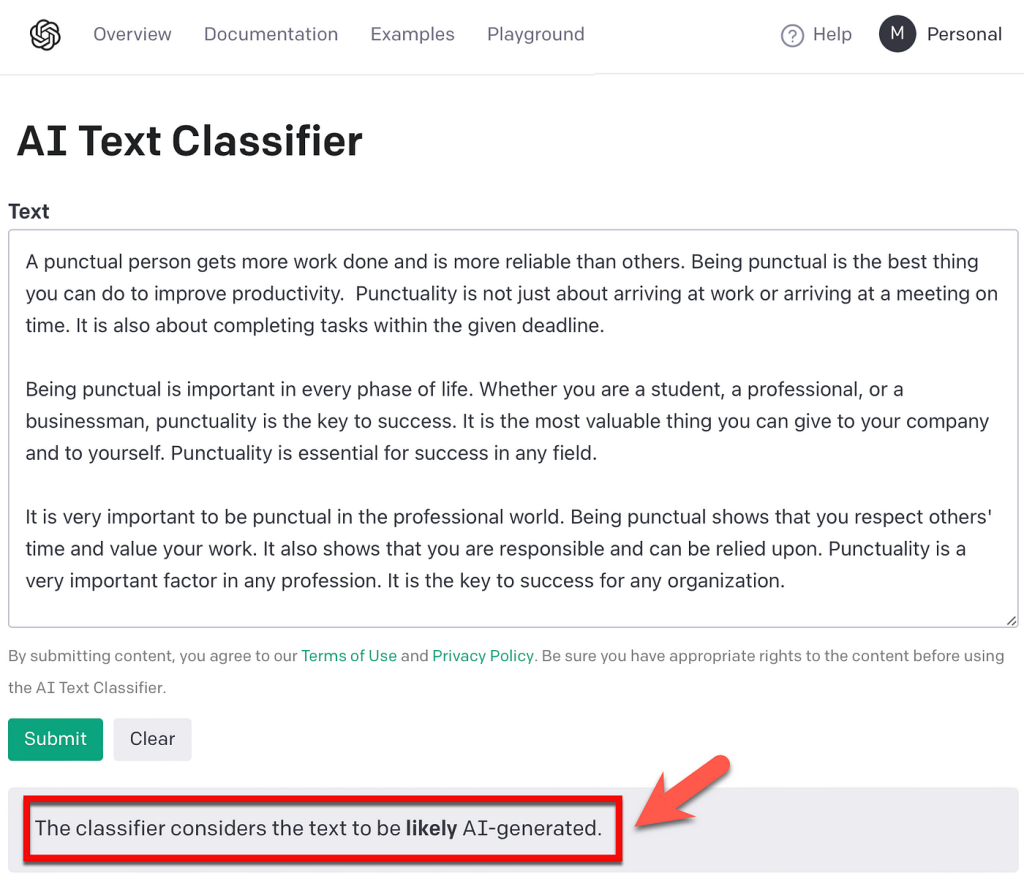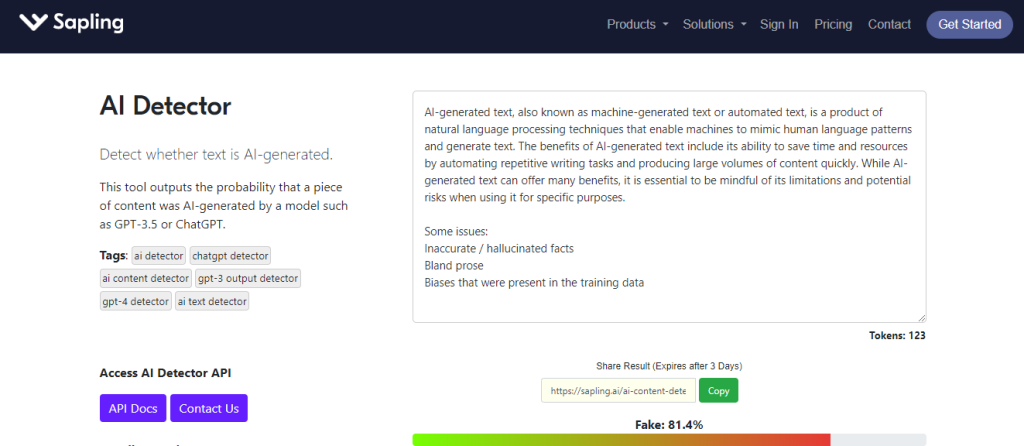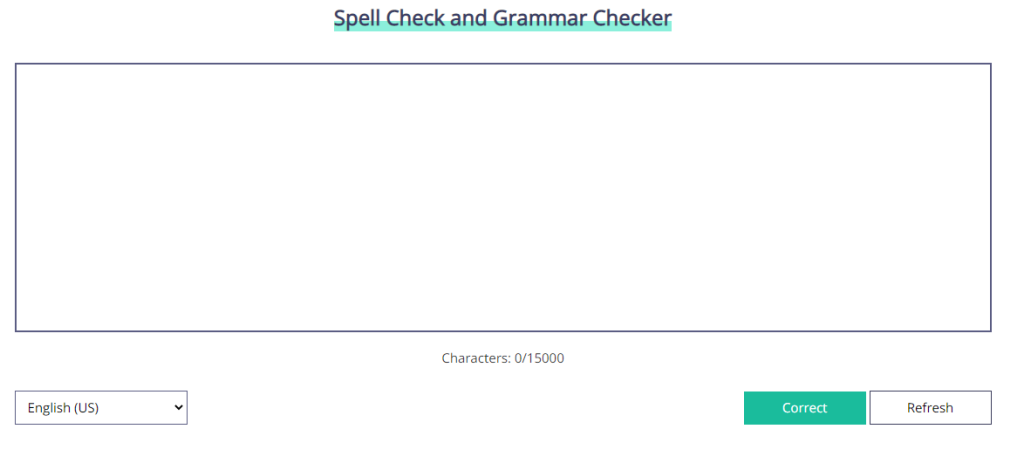Artificial Intelligence has brought a dynamic shift in the way content is created. A plethora of bloggers and content creators are using AI writers to generate quality content. But, with so many AI content detection tools available online, it is difficult to distinguish between AI and human-generated content. AI Content Detector tool can be useful for this purpose. In this post, we will cover what are AI Content detector and generator tool and their uses.
Page Contents:
What is AI Content Detector Tool?
AI Content Detector is a tool that uses artificial intelligence to analyze whether a piece of text is human-written or AI-generated. These tools incorporate AI technologies and advanced algorithms to determine whether a particular content is AI-generated or not.
How does an AI Content Detector tool works?
The AI content detectors use several natural language processing (NLP) techniques and machine learning algorithms to evaluate a particular piece of text. There are several different techniques to detect whether a text is humanly written or generated by AI. Some of how these tools work is:
- Linguistic analysis: Text generated via AI usually lack semantic meaning and mostly repeats words or phrases throughout the content.
- Comparison method: If a piece of content seems similar to previously known AI-generated content, it may be also generated using AI.
AI Content Detection Tools Examples
Writer AI Content Detector
It is an AI writing tool and also has an AI content detection tool. You don’t need to sign up to use this software. To check the content, you simply need to paste the text in the editor panel or enter the URL of the webpage from where the text can be reviewed. As you paste the text and click on analyze text, it will display the percentage of the text generated by humans on the right side of the panel.
It allows reviewing 1500 characters at once. For evaluating more text, you will need to subscribe to their team plan.
Open AI Text Classifier
It enables you to detect whether a particular piece of text was generated by Chat GPT and other AI tools. To use this tool, you will need to set up a free account on the OpenAI website. When you have entered the text and clicked on the submit button, it determines if the text is human-written or generated by AI. Furthermore, it categorizes the probability of AI content as very unlikely, unlikely, unclear, possibly, or likely.
Kazan SEO
This tool serves as a basic SEO tool as well as an AI content detection tool. It is free to use and does not have any word limit for content detection. You will have to create an account and paste the content you want to review in the editor window. On the right side of the panel, it will display whether the content is real or fake.
Sapling AI Content detector
Sapling AI is a grammar checker and writing assistant tool and also has a content detection option. All you need to do is to paste the piece of text that you want to evaluate into the editor window. This tool detects the probability of a particular text being real or AI-generated. The free version allows you to check up to 500 words at a time. If you want to check more AI-generated content, you will have to subscribe to its premium version.
Corrector App
It is grammar checker software and also works as an AI content detector tool. It uses natural language processing algorithms and advanced learning models to detect GPT-2 and GPT-3 content. The major advantage of using this app is that you don’t have to create an account. You can check up to 300 words for free at once. The app can be accessed on iOS, Android, and Kindle devices.
It is important to be careful while using AI content detector tools and not just implement them for producing tons of content that has no real value for the audience. Google might detect AI-generated content but it does not impact your rankings as long as you are delivering value and writing for users rather than search engines. Remember, quality is the key here. Do not publish plagiarised content and ensure that the content is of value to the audience and is not spreading misinformation.




